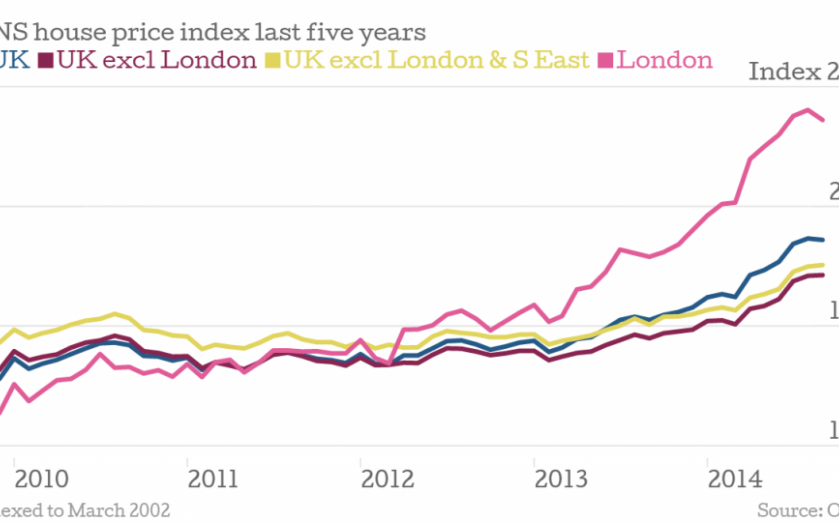UK house prices in charts: London’s growth slows, but how are other regions performing?

UK house prices growth slowed between August and September, as the cooling London market weighed on the rest of the UK.
As this chart shows, London’s price index fell by 1.1 per cent between August and September. The UK as a whole saw a drop of 0.2 per cent.
Once the London effect is removed from the equation, the data shows that prices are continuing to rise elsewhere. Here is a chart showing annual percentage changes for August and September:

Prices for the UK excluding London grew by 0.1 per cent, while taking the south east from the equation too showed growth outside the typical engine room of the market up by 0.2 per cent. Outside the capital, which still has an annualised growth rate of 18.8 per cent, the East of England saw the strongest growth for the year to September.

The seasonally adjusted figures show a moderate rise between August and September, of 0.4 per cent for the UK. This is perhaps more illustrative as using annualised data removes more of the market’s volatility. Note the huge, recession-shaped dip in the middle.

Again, with London removed, the rise is greater: 0.7 per cent. The gains increase to 1.3 per cent when the south east is removed too.
London’s annual growth however still dwarfs the rest of the UK, and the capital remains the engine behind the market’s revival.
A closer look at the last five years shows the recent effects London’s prices have had on the wider market.

Peter Rollings, chief executive of estate agents Marsh & Parsons, believes that despite the moderation of growth, the UK’s market looks healthy. He also sees London as an injector of energy:
The legs of house price growth are certainly feeling the effects of the rapid uphill ‘sprint’ at the start of 2014. Property prices rose a moderate 0.5 per cent in the month to September 2014, and values have retreated back from peak levels in the majority of regions across the country.
But considering where we’ve travelled from, the housing market recovery is still showing spritely movement, and good ground has been covered in property values compared to a year ago.
London remains the spark plug injecting energy into the overall annual rise in UK house prices, and lively demand to live and work in the capital has always spurred growth on at a faster pace than in other regions.
With a general election around the corner and interest-rate hikes somewhere on the horizon, house price growth is expected to continue to slow in the coming months.